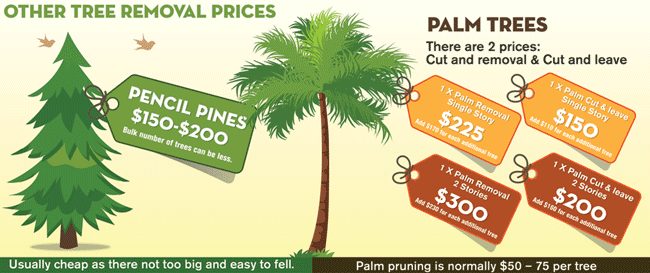Investigate Methods To Sustain A Flourishing Landscape After The Removal Of Trees
Investigate Methods To Sustain A Flourishing Landscape After The Removal Of Trees
Blog Article
Web Content By-
When it pertains to seasonal tree care, ensuring appropriate administration before and after elimination can substantially affect the health and wellness and looks of your landscape. By understanding the required steps associated with evaluating tree wellness and getting ready for elimination, you can proactively protect your residential or commercial property. But what regarding the important practices to follow as soon as the tree is gone? Keep tuned to discover the essential post-removal treatment actions that will help you cultivate a flourishing and sustainable setting for your trees.
Pre-Removal Tree Care
Before dealing with the elimination of a tree, it's critical to focus on pre-removal tree care. Beginning by analyzing the tree's health and structural honesty. Search for indications of illness, insect problems, or any kind of architectural issues that may pose a safety and security hazard during elimination. It's necessary to speak with a certified arborist to figure out the most effective course of action.
Trimming dead or diseased branches can stop more damages to the tree and make sure a smoother elimination process.
Furthermore, consider the ecological influence of removing the tree. Trees play a vital role in our environment, so growing a new tree in an ideal place can help balance out any loss. Ensure that you have the essential authorizations and approvals for tree removal, especially if the tree is secured by neighborhood regulations.
Seasonal Maintenance Tips
Assessing your tree's needs throughout the year is necessary for its wellness and longevity. To keep your trees in top problem, adhere to these seasonal maintenance pointers.
In spring, focus on pruning to get rid of dead or damaged branches and urge new development.
Summer calls for regular watering, particularly during dry spells, to guarantee your tree remains hydrated.
As fall methods, watch out for early signs of illness or tension, and think about applying mulch to shield the origins throughout winter season.
In winter months, be cautious when getting rid of snow from branches to stop damage, and continue to monitor your tree's general health.
Bear in mind to readjust your treatment routine based upon the certain demands of your tree species and local environment. By remaining conscientious and proactive throughout the seasons, you can assist your trees flourish and flourish for several years to come.
Post-Removal Tree Care
To make certain the wellness of your landscape even after tree removal, proper post-removal care is necessary. After a tree is gotten rid of, it's vital to fill the remaining hole with topsoil and small it to prevent settling. This will help maintain the integrity of the ground and prevent prospective hazards in the future.
Take into consideration planting new plants in place of the gotten rid of tree to bring back the balance and aesthetic appeals of your landscape. Consistently Read the Full Article to promote the growth of new plants and stop soil disintegration.
Check the bordering trees for any kind of indicators of illness or anxiety that may have been triggered by the gotten rid of tree. Keep an eye out for pests that may've been drawn in to the previous tree and take safety nets to safeguard the remaining vegetation.
If needed, seek advice from a specialist arborist to examine the effect of the elimination on the surrounding trees and determine any extra care required. By tree moving service to these post-removal treatment actions, you can guarantee the continued wellness and appeal of your landscape.
Verdict
To conclude, positive seasonal tree care is crucial for preserving the health and equilibrium of your landscape. By assessing tree health and wellness, pruning, and talking to an arborist before elimination, you can make certain a safe process. After removal, filling up the hole, growing new vegetation, and normal watering will promote new development and prevent erosion. Keep in mind to inspect bordering trees for illness and look for additional treatment actions from an arborist to maintain your landscape growing.
